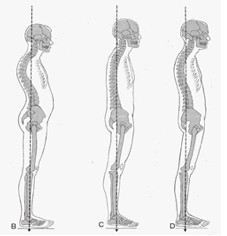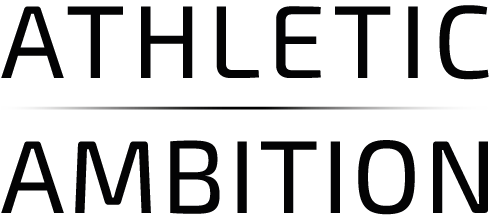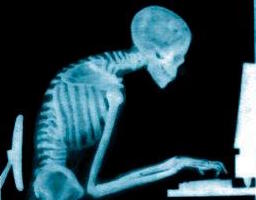How does your posture hold up? Many people I see have many of the same postural problems. With a more sedentary lifestyle, is it any wonder why more people are getting aches and pains throughout the body?
I come across bad posture everyday. When new clients come into start training with me, their main goals may be weight loss, improved stamina or improved strength. When doing simple assessments, we can see that the majority of people have bad posture, which can greatly inhibit their exercise routine and performance.
The reason we look in detail at the clients’ movement and posture is due to the problems the client may not know he/she has. These are called asymptomatic problems. This could be down to the shoulder being out of the correct position, but causes no pain. We then have symptomatic problems, where the shoulder could be out of the correct position and causes pain to the client.
At Athletic Ambition, we implement an exercise program that both matches what the client/athlete would like to achieve e.g. fat loss/improved sports performance, but can also help improve our clients’ posture, movement and mobility.
With more of the general public being less active and leading a more sedentary lifestyle, this can lead to incorrect posture. When asking what people do for jobs, the majority of them are either stuck behind a desk all day or stuck behind a wheel of a car all day. They then get home and sit in non-supportive chairs and watch television, read, or go on the computer.
Athletes can also have asymmetries throughout the body; for example, ice hockey players are renowned for having extremely tight hip flexor muscles, which can lead to an excessive anterior pelvic tilt.
This can lead to many changes in the posture of the people we see. The most common sights we see at Athletic Ambition when working with new clients are:
- Anterior tilt in the shoulders
- Internal rotation of the upper arm
- Rounding of the upper spine (thoracic kyphosis)
- Forward head posture
- Posterior tilt to the hips
- Excessive arch in the lower spine (lumber lordosis)
- Excessive anterior tilt of the hips (pelvis)
- Valgus collapse at the knee
- Pronation of the foot

Image shows three views of bad alignment: b = kyphosis/lordosis; c = flat back; d = sway (1)
The majority of these can be corrected by implementing an exercise routine, which targets the muscles in the back of our body (posterior chain). We also implement mobility exercises and self myo-fascial release through the use of foam and plastic rollers and tennis, lacrosse and golf balls across the body to improve range of motion at the joints, especially at the hip and shoulder joints.
The main muscles that make up our posterior chain are:
- Upper back (upper Trapezius, Rhomboids and Rear Deltoids)
- Middle back (mid and lower Trapezius and Latissimus Dorsi)
- Lower back (Erector Spinea)
- Buttocks (Gluteus Maximus and Gluteus Medius)
- Back of upper leg (Biceps Femoris, Semitendinosus and Semimembranosus)
- Back of lower leg (Gastrocnemius and Soleus)
At Athletic Ambition we work on improving the strength of these muscles depending on the problems each client has with his or her posture. Our aim is to get our clients back in to correct posture, which would be to have:
- Shoulders pulled back, with the shoulder blades lying flush against the rib cage
- Head and neck pulled back
- No internal rotation of the hands
- Slight curvature of the upper (thoracic) spine
- Slight curvature to the lower (lumber) spine
- Hips to be level, with a little anterior pelvic tilt
- Hips, knees and ankles in alignment
- Normal foot alignment

Image a. shows position of spine in ideal alignment (1)
Reference
- Beachle, T.R., and Earle, R.W. Essentials of Strength and Conditioning, 3rd ed. Champaign, IL: Human Kinetics. 2008
For more information on correct posture or if you have postural problems and postural related injuries, contact harry@athletic-ambition.com.
Harry Grove BSc CSCS
Harry is a strength and conditioning coach and personal trainer. He has been in the health and fitness industry since 2000 and has trained 1000’s of clients, ranging from your everyday gym goers to professional athletes. Harry has competed as an international level powerlifter.


Recent Comments